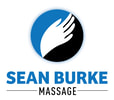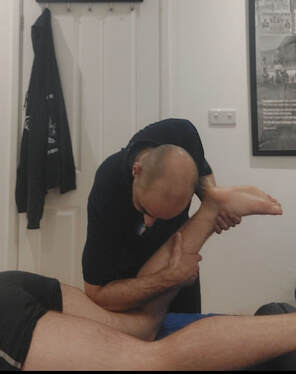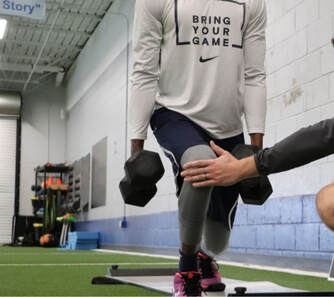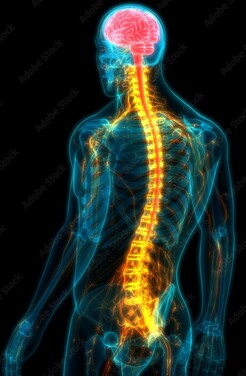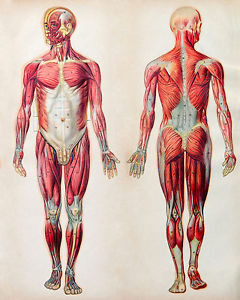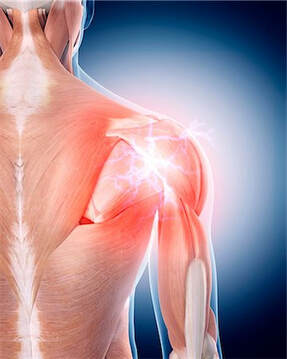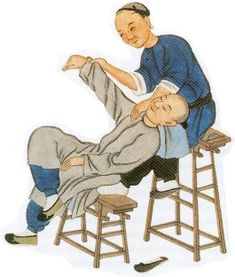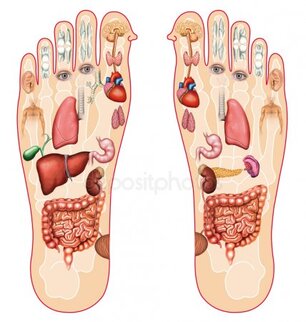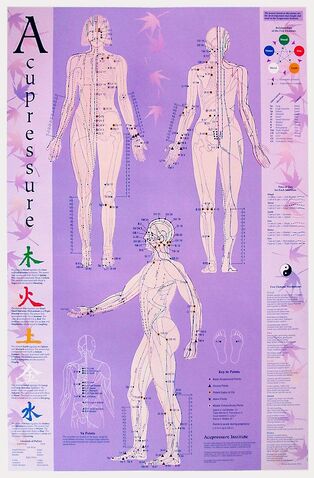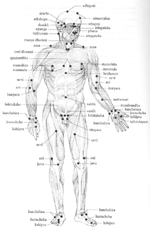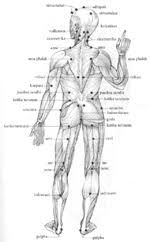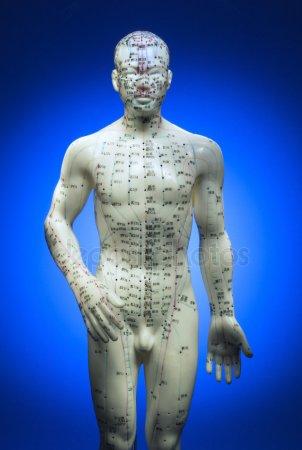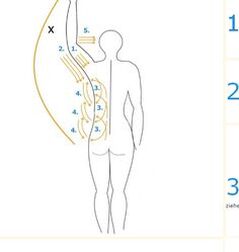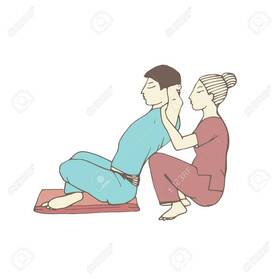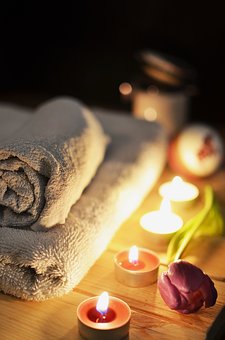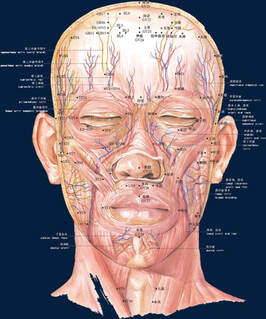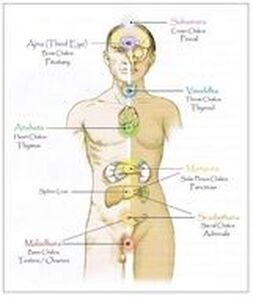Integrated Massage
I am a qualified Sports Massage practitioner and primarily work with athletes, at all levels. Whether it is helping my clients with maintainence, improvement, or with injury recovery and rehabilitation. Most of my clients are powerlifters, bodybuilders, boxers, MMA fighters, cross-fit enthusiasts, runners, cyclists, and volleyball players. I also have a number of clients that are not sports based, and have conditions that respond well to massage, or have demanding physical jobs that take a toll on the body, and of course many who just enjoy massage as a part of their self-care and wellness.
Along with sports massage I am qualified and insured to perfrom Osteopathic and Chiropractic manipulations and articulations.
I am also; a certified MSK Shoulder Specialist for shoulder pain,
a certified international specialist in clinical stretching and flexibility for functional movement rehabilitation,
and a certified manual maxillofacial therapist for osteopathic treatment of the TMJ and headaches.
As a part of being a sports masssage practitioner I am first aid trained and am also qualified in athletic strapping and taping and kinesiology taping. I am qualified in clinical safety in intraoral and extraoral techniques, clinical application of PPE, clinical hygiene standards and professional best practice. I am also certified in clinical excellence in blood pressure testing, oximeter testing, cardiovascular screening, and in understanding red flags and serious spinal pathology.
I have been practicising since 2009, but continue to study anatomy and physiology, rehabilitation, biomechanics, and various conditions at a masterclass level, many of the CPD qualifications are listed below in the relevant sections.
I am also one of the very few qualified Baiobit centers in the UK, at the time of writing I am the only clinic in the South East, the next nearest is in London, I am one of seven in total in England. Please check the Baiobit page for more info on this service, for both improvement in movement and in rehabilitation this is second to none worldwide. I also use their digital measurement tools for both angle and force measurement with highly specialised clinical grade equipment (easyangle and easyforce).
I offer an integration of various massage disciplines into each session.
Each massage is different. It is determined by medical history, preference, where tension presents itself on the day, and to what degree. As tension releases, it follows a path in the body, and it may be held in a different place to where it is felt, and the focus of each session varies, following the body's lead.
Through integrating different disciplines, some techniques and knowledge overlap, as if they are different parts of the same system. Some disciplines are very different from one another, broadening the range and scope of the work possible to my clients.
For example, I find it important to include the hands, feet and head in massage, which are often omitted by sticking to one discipline alone.
Whilst I practice deep tissue massage, I work at the pace and depth appropriate to the client, and with the tension, deepening the massage as the body releases and the client relaxes.
I work with my clients to find and help them to release tension. The benefits are not limited to relaxation and pain relief, but also improved range of motion, posture, and even emotional well being. The effects reach many areas of our life, from energy levels to sleep quality, and are at the core of our day to day living.
Sessions for a full body massage are usually 1 hour for the first booking, where an assessment, and a plan for future treatments can be made.
I offer up to 2 hour sessions for optimal results per session.
Below are some of the disciplines I draw from and a brief description.
Sports Massage
Injury prevention and rehabilitation
Osteopathic and Chiropractic Manipulation and Articulation
Anatomy Trains
Therapeutic, Remedial and Deep Tissue Massage
Shiatsu
Reflexology
Acupressure
Ayurvedic Massage and Marma Therapy
Chinese Massage/Tui Na
Lomi Lomi or Kahuna Hawaiian Style Massage
Thai Massage
Swedish Massage
Indian Head Massage
Reiki
Sports Massage
I am a qualified and insured Sports Massage therapist which covers anatomy and physiology for sports massage, principles of health and fitness, the principles of soft tissue dysfuntion and injury, treatment to support injury rehabilitation, performing subjective and objective assessment, professional practice in sports massage treatments, different sports massage treatments, understanding and providing sports massage techniques including M.E.T.'s (Muscle Energy Techniques), R.I. (Reciprocal Inhibition), P.I.R. (Post Isometric Relaxation), Transverse Frictions, N.M.T.'s (Neuromuscular techniques) such as Trigger Point therapy, Myofascial release, S.T.R. (Soft Tissue Release).
I often provide pre-event and post- event massage, getting fighters ready for their bout and in treating them after.
I often will work alongside clients in their programs of training, whether they are preparing to compete in powerlifting, body building both off-season and in prep, boxing in camp and off-season.
I work alongside coaches and help maintain their clients in their training programmes. I am proud to work with some great coaches!
Injury Prevention and Rehabilitation
As part of sports massage I am trained and qualified in assessment and treatment, where appropriate, of injuries and rehabilitation. Sports massage also covers assessing quality and quantity of movement/range of motion. I will assess you and provide a plan to rectify patterns and rehabilitate injuries.
I am also certified in the following:
*Diploma in functional movement rehabilitation L1 - Spine
Certified international specialist in clinical stretching and flexibility
*MSK Shoulder specialist
I have completed the following PhysioNetwork Masterclasses for CPD certification:
*Exercise prescription in sports rehab
*Optimal loading of muscle injuries
*Hamstring strain injury - translating research into practice
*Groin pain in athletes unravelling the mystery
*Concussion assessment and treatment
*Patellofemoral pain
*Assessment and treatment of cervicogenic dizziness
*Illiotibial band pain practical strategies for treating runners
*Frozen shoulder
*Diagnosing and managing plantar heel pain
*The sporting Shoulder
*Clinical reasoning in pain management
*Pain, movement, and play, common sense for complex problems
*Low back pain, movement and posture
*Know pain, a practical guide to persistent pain therapy
*Exercise and pain, exploring a complex relationship
*A framework for optimising the patient interview and clinical outcomes
*The mindfulness revolution, current evidence and practical applications for pain and stress management
*Pain - a guide for clinicians
*Telehealth in the 21st century
Osteopathic and Chiropractic Manipulation and Articulation
I am qualified and insured to make Osteopathic and Chiropractic manipulations such as HVLA and LVLA.
Covering active and passive examination of the spine, scientific research and safe practice surrounding manipulation, imcluding red flags, contraindications to treatment using manipulation, diagnosis and treatment using manipulative technique. Additionally covering manipulation techniques to C7/TI, ribs, thoracic spine, lumbar spine and SIJ.
Also covering neuro-chemical mechanisms, neurogenic and general pain mechanisms, myofascial pain diagnosis and treatment. Applied articulation procedures to areas including TMJ, Cervical, Thoracic, Lumbar, SIJ and upper and lower extremities.
Current qualifications through O.M.T. :
*Osteopathic Articulation Diploma
*Osteopathic and Chiropractic techniques L1
Anatomy Trains
The Anatomy Trains is a tool which enables the practitioner to see the soft tissue connections throughout the body. Anatomy Trains allows your practitioner to see your body as a whole rather than a collection of individual parts. Structural integration aims to integrate all these parts so we can move through life more efficiently.
The myofascial system consists of muscles (greek: myo) and the connective tissue (fascia) that intertwines the muscles and forms a continuous web throughout the body. As the tightness in the myofascia is released, many of the everyday aches and pains and chronic problems that you feel can disappear and your posture can be greatly improved. Movement becomes easier and energy levels improve as your body begins to work more efficiently.
I am certified in the following with Anatomy Trains:
*ATSF (Anatomy trains in structure and function)
*ATSI (Anatomy trains in structural integration session 1, 2, and 3)
*AT Masterclass: Understanding and working with scoliosis
*"Throw it!" Shoulder injuries in sports with Eric Cressey
*ATSI Bodyreading
*Bodyreading assessing the spine
*AT Fascial tensegrity
*Bodyreading Front line and superficial back line
*Bodyreading Lateral line and deep front line
*Bodyreading Spiral line and the arms
*Bodyreading as a skill
*AT Superficial front line
*AT Superficial back line
*AT Deep front line upper
*AT Deep front line lower
*AT Lateral line
*AT Spiral line
*AT Functional line
*AT Shoulder and arm line
*AT Myofascial meridians
The myofascial system consists of muscles (greek: myo) and the connective tissue (fascia) that intertwines the muscles and forms a continuous web throughout the body. As the tightness in the myofascia is released, many of the everyday aches and pains and chronic problems that you feel can disappear and your posture can be greatly improved. Movement becomes easier and energy levels improve as your body begins to work more efficiently.
I am certified in the following with Anatomy Trains:
*ATSF (Anatomy trains in structure and function)
*ATSI (Anatomy trains in structural integration session 1, 2, and 3)
*AT Masterclass: Understanding and working with scoliosis
*"Throw it!" Shoulder injuries in sports with Eric Cressey
*ATSI Bodyreading
*Bodyreading assessing the spine
*AT Fascial tensegrity
*Bodyreading Front line and superficial back line
*Bodyreading Lateral line and deep front line
*Bodyreading Spiral line and the arms
*Bodyreading as a skill
*AT Superficial front line
*AT Superficial back line
*AT Deep front line upper
*AT Deep front line lower
*AT Lateral line
*AT Spiral line
*AT Functional line
*AT Shoulder and arm line
*AT Myofascial meridians
Therapeutic, Remedial, and Deep Tissue Massage
These styles of massage are very similar to each other, although techniques and styles can vary from country to country. For example, in the U.S., therapeutic massage is considered a strong from of massage, while often in Australia, it is not. Remedial massage is a common term in Australia and the U.K., while it is not used in North America.
All of these massage styles involve finding the problem areas in the body and working on them. Most of the time, this involves finding areas of tight muscles and loosening them up. Some of these styles are more focused on particular areas, such as a tight shoulder, while other times they include a whole body massage.
All of these massage styles involve finding the problem areas in the body and working on them. Most of the time, this involves finding areas of tight muscles and loosening them up. Some of these styles are more focused on particular areas, such as a tight shoulder, while other times they include a whole body massage.
Shiatsu
"Shi" meaning finger and "atsu" meaning pressure.
A system based on the body's energy meridians. Shiatsu massages are normally done fully clothed and involve pressing points on the body and stretching and opening of the energy meridians.
Shiatsu is also related to acupuncture, which is a form of therapy used in Chinese medicine.
Shiatsu is a Japanese system of finger-pressure massage which treats special points along acupuncture "meridians", the invisible channels of energy flow in the body. Blocked energy along these meridians can cause discomfort and disease, so the aim is to release the blocks and re-balance the energy flow. It can be used as a full body treatment or for specific work on one area of the body.
A system based on the body's energy meridians. Shiatsu massages are normally done fully clothed and involve pressing points on the body and stretching and opening of the energy meridians.
Shiatsu is also related to acupuncture, which is a form of therapy used in Chinese medicine.
Shiatsu is a Japanese system of finger-pressure massage which treats special points along acupuncture "meridians", the invisible channels of energy flow in the body. Blocked energy along these meridians can cause discomfort and disease, so the aim is to release the blocks and re-balance the energy flow. It can be used as a full body treatment or for specific work on one area of the body.
Reflexology
It is a technique of manipulating the feet in order to improve circulation, ease pain, and increase relaxation in the body. Reflexology is based on the theory that all body parts, organs, and glands are associated with specific areas, called reflex zones, in the feet, hands, ears, and surface of the skin. By manipulating the reflex zones, changes can be effected in the corresponding body part. Reflexology is generally focused on the feet because of the vast amount of nerve endings found there.
Acupressure
Traditional Chinese medicine discovered a system of channels, or points, in the body (meridians) that would relieve pain and promote healing. These meridians are invisible wires that conduct the body's chi or life energy. It involves placing physical pressure, by hand, elbow, or with the aid of various devices, on different pressure points on the surface of the body (which may be far different from the acupuncture system). In acupressure, finger or hand pressure is used instead of needles, as in acupuncture. Acupuncture has the same goal, to stimulate chi. Acupressure is used for both pain relief and for treating diseases
Ayurvedic Massage and Marma Therapy
The life force, or prana, circulates through these 144,000 subtle channels or conduits called nadis. Three if the most important ones of which are the ida-nadi, pingala-nadi, and sushamna-nadi. It is the application of pressure or localised massage to specific areas of the body (as in acupresure), that supports the free flow of energy within these energy circuits and helps to undo and release energy blockages, which initiates a healing process. Marma points vary in size from being the same as an acupressure point to being a much larger general area, such as the buttock.
Ayurvedic massage generally places great emphasis on oil massage or abhyanga. Oils are selected on the basis of a person's constitution or particular inbalance and then rubbed into the body. These oils are infused with various kinds of powdered herbs and rubbed into the body in order to allow these oils to get into the bloodstream. Much greater quantities of oil are used in Ayurvedic massage than in typical Western massage and they even have a special type of table to catch the oil.
Ayurvedic massage generally places great emphasis on oil massage or abhyanga. Oils are selected on the basis of a person's constitution or particular inbalance and then rubbed into the body. These oils are infused with various kinds of powdered herbs and rubbed into the body in order to allow these oils to get into the bloodstream. Much greater quantities of oil are used in Ayurvedic massage than in typical Western massage and they even have a special type of table to catch the oil.
Chinese Massage/Tui Na
Tui na massage takes its name from the Chinese words that mean "lift and press". It requires the controlled use of very deep, but constantly moving pressure, repeated hundreds of times. The practitioner pushes hard with the ball of the thumb, then rubs lightly around the area being treated. A therapist using this form of massage might spend as much time on one of the patient's joints or limbs as a Western therapist would spend massaging the entire body. Tui na is used to treat a wide variety of conditions that would require a team of physiotherapists, chiropractors, and physicians specialising in sports medicine to treat in the West. One Chinese medical book lists over 140 conditions that can be healed with Tui na, including disorders of the internal organs as well as sprains, pulled muscles, arthritis, and sciatica, a pain in the lower back and back of the thighs.
Lomi Lomi or Kahuna Hawaiian Style Massage
Lomi Lomi massage is an ancient art from the Hawaiian healing specialists. They taught their art for over 20 years and received their last instructions from their master on his death bed. There are hundreds of styles of Lomi Lomi, the main ones being the style of the Big Island which was passed on by Aunty Margaret Machado, and the Maui style from Uncle Kalua Kaiahua. On the island of Kaua'i, Kahu Abraham passed on what is today called Kahuna bodywork. It is not clear if other current practices - temple style, Lomi Lomi Nui and others - are from Native Hawaiian practitioners or are modern adaptations.
Hawaiian massage often uses long rhythmical strokes that cover the entire body. Bringing the spirit of "aloha" or spiritual love into the massage through the hands is also an important aspect of Hawaiian massage.
Hawaiian massage often uses long rhythmical strokes that cover the entire body. Bringing the spirit of "aloha" or spiritual love into the massage through the hands is also an important aspect of Hawaiian massage.
Thai Massage
This massage originated in India over 2500 years ago. The theoretical basis for this style of bodywork is the existence of the "energy body" which includes 72,000 "sen" or energy lines through which life force flows.
Through compressions, pressure on specific points and stretches to release blockages, a free flow of energy is restored. Thai massage is performed on a futon over clothing. No oil or lotion is used.
It is a sacred form of bodywork that resembles Shiatsu and is related to Nadi Sutra Kriya. It draws from acupressure, passive yoga therapy, and reflexology. Thai massage makes recipients feel more balanced physically, mentally, emotionally, and spiritually.
Through compressions, pressure on specific points and stretches to release blockages, a free flow of energy is restored. Thai massage is performed on a futon over clothing. No oil or lotion is used.
It is a sacred form of bodywork that resembles Shiatsu and is related to Nadi Sutra Kriya. It draws from acupressure, passive yoga therapy, and reflexology. Thai massage makes recipients feel more balanced physically, mentally, emotionally, and spiritually.
Swedish Massage
A system of massage developed by Per Hendrik Ling in the 1800's in Europe, uses light strokes to stimulate blood flow and muscle relaxation.
Swedish massage techniques include long strokes, kneading friction, tapping percussion, vibration, effleurage, and shaking motions.
Strokes are usually done in the direction of the heart.
Swedish massage techniques include long strokes, kneading friction, tapping percussion, vibration, effleurage, and shaking motions.
Strokes are usually done in the direction of the heart.
Indian Head Massage
Indian Head Massage is a treatment based on old Ayurvedic techniques involving work on the upper back, neck, shoulders, face and scalp.
It will leave you relaxed, stress-free and relieved of any physical or emotional tension.
It will leave you relaxed, stress-free and relieved of any physical or emotional tension.
Reiki
Reiki is a spiritual healing art with its roots in Japanese origin. The word Reiki comes from the Japanese word (Rei) which means “Universal Life” and (Ki) which means “Energy”. Reiki is not affiliated with any particular religion or religious practice. It is not massage nor is it based on belief or suggestion. It is a subtle and effective form of energywork using spiritually guided life force energy.
Reiki is the life energy that flows through all living things. Reiki Practitioners understand that everyone has the ability to connect with their own healing energy and use it to strengthen energy in themselves and help others. It is believed that a person’s “ki” or energy should be strong and free flowing. When this is true a person’s body and mind is in a positive state of health. When the energy becomes weak or blocked it could lead to symptoms of physical or emotional imbalance.
A Reiki session can help ease tension and stress and can help support the body to facilitate an environment for healing on all levels – physical, mental, and emotional. A session is pleasant and relaxing and is often utilized for one’s personal wellness.
Reiki is the life energy that flows through all living things. Reiki Practitioners understand that everyone has the ability to connect with their own healing energy and use it to strengthen energy in themselves and help others. It is believed that a person’s “ki” or energy should be strong and free flowing. When this is true a person’s body and mind is in a positive state of health. When the energy becomes weak or blocked it could lead to symptoms of physical or emotional imbalance.
A Reiki session can help ease tension and stress and can help support the body to facilitate an environment for healing on all levels – physical, mental, and emotional. A session is pleasant and relaxing and is often utilized for one’s personal wellness.
